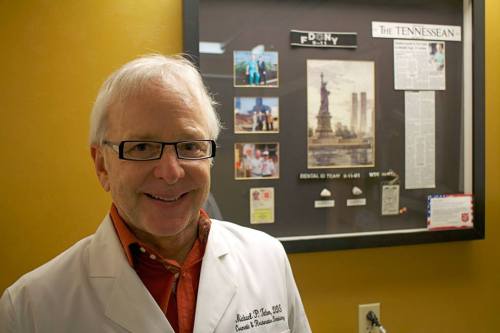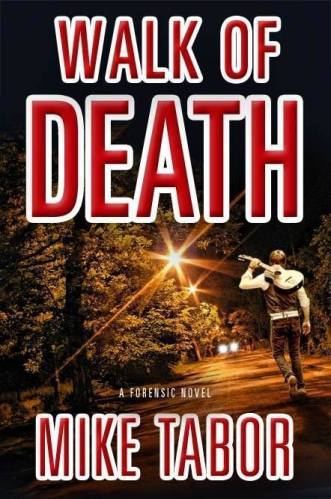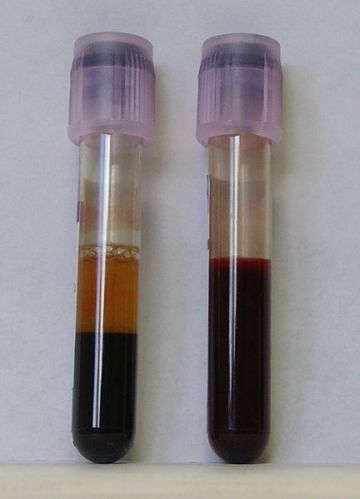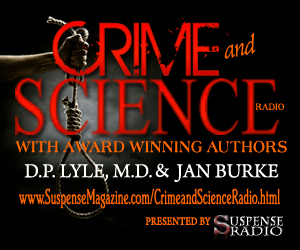Join Jan Burke and DP Lyle as they explore the world of forensic dentistry with Dr. Mike Tabor, Chief Forensic Dentist of the State of Tennessee Office for the Medical Examiner. Learn exactly how forensic dentistry aids in corpse identification and dig into some of Dr. Tabor’s most famous cases.

BIO: In the spring of 1973, Mike Tabor embarked on a journey that would take him down a path he could have never imagined. With a freshly earned DDS, Dr. Mike Tabor left Carson-Newman College and The University of Tennessee College of Dentistry, and began his career as a family dentist. In 1983, Dr. Tabor’s work as a family dentist took a unique turn and he found himself immersed in the highly specialized field of forensic dentistry. As one of only a handful of forensic dentists in the United States, Dr. Tabor became a highly sought after expert in this field, performing identifications and examinations on homicide victims, as well as aiding police departments, investigators and medical examiners all over the Country in the prosecution of thousands of crimes.
In September of 2001, Dr. Tabor found himself in New York, at the site of the World Trade Center terror attacks, aiding in the identification of countless victims. For Mike Tabor, this infamous and historical event forever changed his life. As a forensic dentist, Mike was no stranger to the examination of deceased victims, but the horrors of September 11th would not allow Mike, the man, to separate himself from his work as Dr. Tabor, the forensic dentist. September 11, 2011 left a lasting and emotional impression on Mike and gave him a completely new perspective on life and loss.
Dr. Mike Tabor was a featured contributor and has written an entire chapter for the Internationally Accredited Textbook, Forensic Dentistry. He has served as the president of the Tennessee State Board of Dental Examiners, and is currently the Chief Forensic Dentist for The State of Tennessee Office of the Medical Examiner, and is an energetic, engaging and highly respected and sought after public speaker. He makes his home in Nashville, with his beautiful wife, Karen and their two snow white canine children, Mollie and Millie. He is the proud father of two grown children and the doting grandfather of seven adorable grandchildren.
LISTEN:
LINKS:
Dr. Michael Tabor’s Website: http://www.drmiketabor.com
Dr. Michael Tabor’s Blog: http://www.drmiketabor.com/blog/
Walk Of Death: http://www.amazon.com/Walk-Of-Death-Forensic-Novel/dp/1490533737
American Society of Forensic Odontology: http://asfo.org
How Stuff Works: Forensic Dentistry: http://science.howstuffworks.com/forensic-dentistry.htm
Forensic Odontology: http://www.nlada.org/forensics/for_lib/Documents/1124743291.01/425lect16.htm
International Association for Identification: http://www.theiai.org/disciplines/odontology/
Forensic Dentistry Online: https://www.forensicdentistryonline.org
Medscape: Forensic Dentistry: http://emedicine.medscape.com/article/1771750-overview
Wikipedia: Forensic Dentistry: http://en.wikipedia.org/wiki/Forensic_dentistry
Forensic Dentistry Careers: http://criminologycareers.about.com/od/Forensic-Science-Careers/a/Career-Profile-Forensic-Odontologist.htm
Animal and Human Bite Mark Analysis: http://www.forensic.to/webhome/bitemarks/
Crime Library: Bite Marks As Evidence: http://www.crimelibrary.com/criminal_mind/forensics/bitemarks/1.html
Writers Forensics Blog: Guest Blogger: Dr. Mike Tabor: Anatomy Of A Forensic Dental Identification: https://writersforensicsblog.wordpress.com/2014/06/05/guest-blogger-mike-tabor-anatomy-of-a-forensic-dental-identification/



































